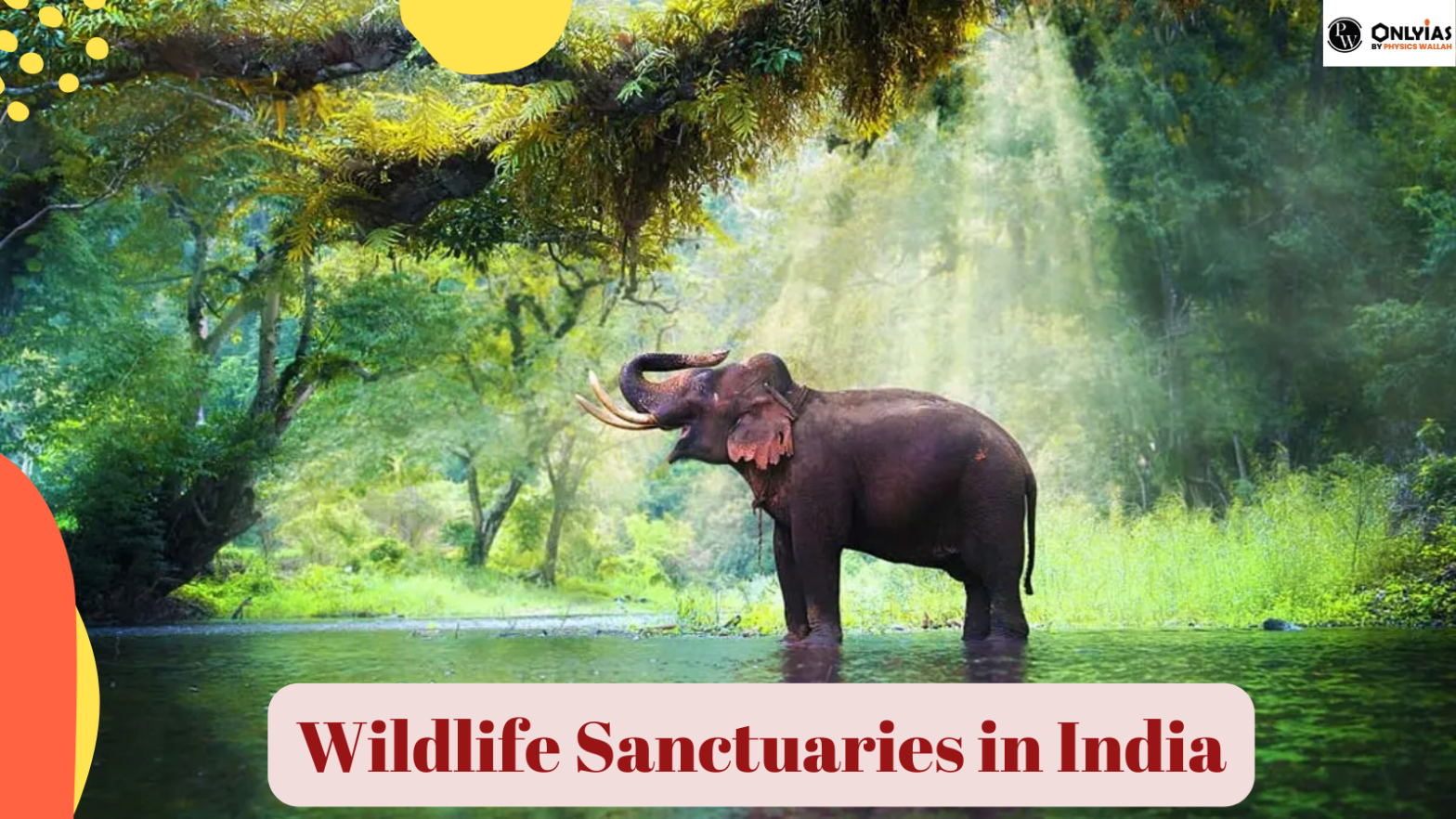
Wildlife sanctuaries in India: A wildlife sanctuary serves as a safeguarded zone wherein animal habitats and their environs are shielded from any form of disruption. Activities such as capturing, killing, and poaching of animals are categorically forbidden within these areas.
The primary goal of wildlife sanctuary is to create a conducive environment for the resident animals. India boasts an array of captivating wildlife sanctuaries characterized by lush forests, expansive rivers, and majestic mountain ranges. A selection of these remarkable sanctuaries in India is highlighted below in this article.
Wildlife Sanctuaries and National Parks in India
Wildlife sanctuaries in India: India’s diverse landscapes and rich biodiversity have given rise to a network of wildlife sanctuaries that serve as crucial havens for a wide variety of flora and fauna. From the arid deserts of Rajasthan to the lush rainforests of the Western Ghats, these sanctuaries play a vital role in conserving India’s natural heritage. In this article, we will embark on a journey through some of India’s most remarkable wildlife sanctuaries, delving into their history, significance, and the incredible wildlife they shelter.

Wildlife sanctuaries in India: Wildlife sanctuaries are designated areas where the intrusion of tourism is strictly prohibited, and unescorted access is not permitted. These sanctuaries are established with the primary goal of educating humans about respectful coexistence with animals, ensuring their wellbeing within their natural habitats.
| Wildlife Sanctuary | State | Established |
|---|---|---|
| Rann of Kutch Wildlife Sanctuary | Gujarat | 1986 |
| Bhadra Wildlife Sanctuary | Karnataka | 1974 |
| Sariska Wildlife Sanctuary | Rajasthan | 1955 |
| Dandeli Wildlife Sanctuary | Karnataka | 1956 |
| Mudumalai Wildlife Sanctuary | Tamil Nadu | 1940 |
| Periyar Wildlife Sanctuary | Kerala | 1950 |
| Kanha Wildlife Sanctuary | Madhya Pradesh | 1955 |
| Sundarbans Wildlife Sanctuary | West Bengal | 1977 |
History: Established in 1986, the Rann of Kutch Wildlife Sanctuary encompasses a unique blend of desert and saline wetlands.
Significance:
History: Declared a wildlife sanctuary in 1974, the Bhadra Wildlife Sanctuary is nestled in the Western Ghats.
Significance:
History: Established in 1955, Sariska Wildlife Sanctuary was one of the first to be included in the ‘Project Tiger’ initiative.
Significance:
History: Founded in 1956, the Dandeli Wildlife Sanctuary spans across the Western Ghats and is part of the Anshi-Dandeli Tiger Reserve.
Significance:
History: Established in 1940, Mudumalai Wildlife Sanctuary is part of the larger Nilgiri Biosphere Reserve.
Significance:
History: Founded in 1950, the Periyar Wildlife Sanctuary is centered around the Periyar Lake in the Western Ghats.
Significance:
History: Declared a sanctuary in 1955, the Kanha Wildlife Sanctuary was the inspiration for Rudyard Kipling’s “The Jungle Book.”
Significance:
History: Established in 1977, the Sundarbans Wildlife Sanctuary is the largest mangrove forest in the world.
Significance:

The establishment of wildlife sanctuaries serves several crucial purposes, some of which are outlined below:
Wildlife sanctuaries in India: Wildlife sanctuaries in India are integral to conserving the country’s diverse ecosystems and unique species. They provide safe havens for wildlife, contribute to scientific research, and support ecotourism, which, when managed sustainably, generates funds for conservation efforts. However, these sanctuaries also face challenges such as habitat loss, poaching, and human-wildlife conflict. To ensure their continued success, it’s vital to prioritize conservation initiatives, involve local communities, and promote responsible tourism practices.
India’s wildlife sanctuaries are not just places of beauty; they are vital components of the nation’s natural heritage. From the enchanting forests of the Western Ghats to the arid expanses of the deserts, each sanctuary contributes to the intricate web of life that makes India’s ecosystems unique. As stewards of these precious havens, it’s our responsibility to appreciate, protect, and advocate for the conservation of these extraordinary places for generations to come.
Also Read:
| Biosphere Reserves in India in 2023 | Largest Volcanoes in the World |
| List of All National Parks in India | Satkosia Wildlife Sanctuary |
As of January 2023, India comprises 567 operational wildlife sanctuaries, encompassing a total area of 122,564.86 square kilometers. This area corresponds to 3.73% of the nation's geographical expanse (as per the National Wildlife Database).
The Ranthambore National Park, situated within the state of Rajasthan holds the distinction of being the most expansive wildlife sanctuary in India.
Among the well-known sanctuaries in India where the majestic tigers roam freely in their natural domain are Corbett National Park, Ranthambhore National Park, and Sundarbans National Park. For a rare opportunity to observe the endangered one-horned Rhinos, the exclusive destination is Kaziranga National Park, the sole place in the world where they thrive.
The oldest wildlife sanctuary in India is the Hailey National Park, which is now known as Jim Corbett National Park. It was established in 1936 in the Nainital district of Uttarakhand. This park holds historical significance as it played a crucial role in the initiation of conservation efforts and the establishment of protected areas in India.

<div class="new-fform">
</div>